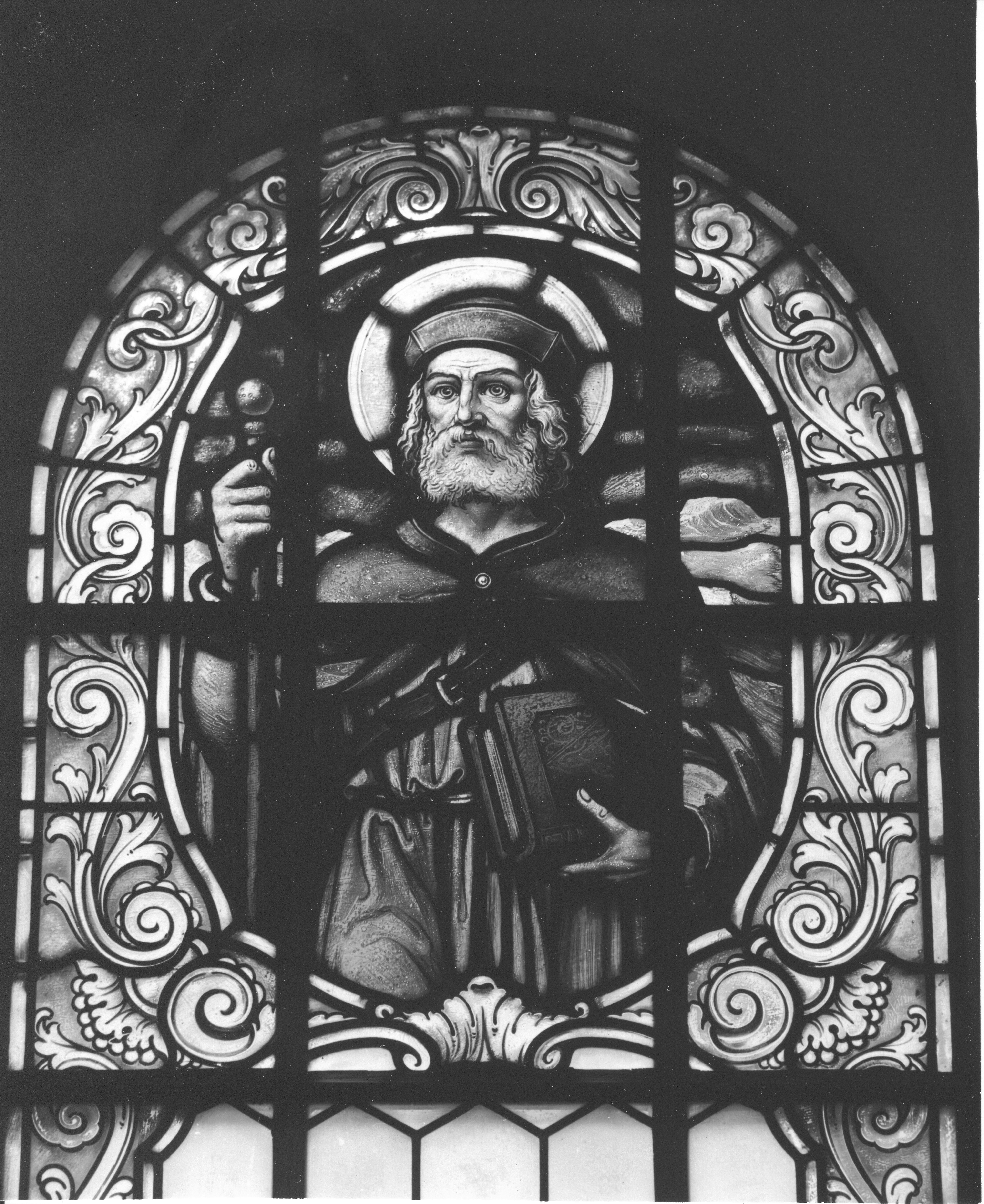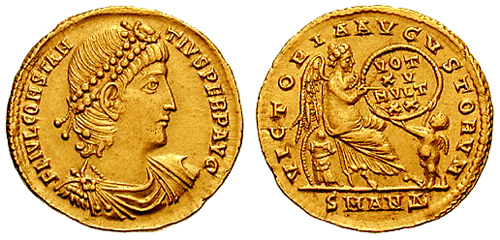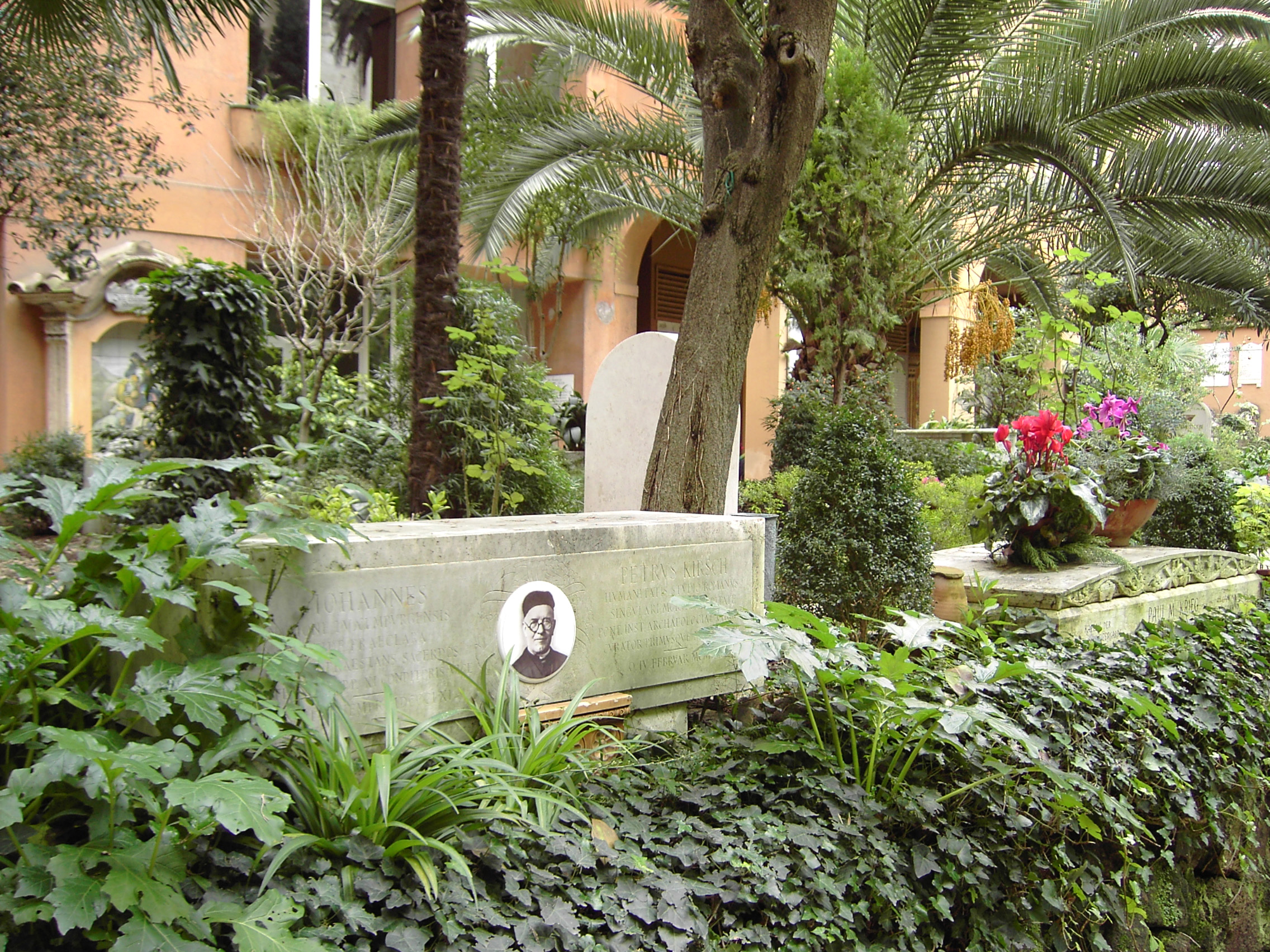|
Fridolin Of Säckingen
Saint Fridolin of Säckingen, also known as Fridold or Fredelinus, is a legendary Irish missionary, apostle of the Alamanni and founder of Säckingen Abbey on the Upper Rhine. He is also the patron saint of the Swiss canton of Glarus. His oldest ''Vita'' is dated to the 10th or 11th century. Later tradition places the beginning of his mission during the reign of Clovis I (r. 509 – 511), and his death during the reign of Theudebert I (r. 533–548). The date of his death is traditionally given as 6 March in either 538 or 540. Modern historiography has tended to place the founder of Säckingen Abbey in the 7th rather than 6th century, tentatively assuming the existence of a historical Saint Fridolin under Clovis II (r. 639–657) rather than Clovis I. Source The earliest known reference to Fridolin is found in the records of a priest Hatto, towards the end of the 9th century. He made an inventory of the abandoned monastery from fear of the Normans. His list includes a Codex ... [...More Info...] [...Related Items...] OR: [Wikipedia] [Google] [Baidu] |
6 March
Events Pre-1600 *12 BCE – The Roman emperor Augustus is named Pontifex Maximus, incorporating the position into that of the emperor. * 632 – The Farewell Sermon (Khutbah, Khutbatul Wada') of the Islamic prophet Muhammad. * 845 – The 42 Martyrs of Amorium are killed after refusing to convert to Islam. * 961 – Byzantine conquest of Chandax by Nikephoros II Phokas, Nikephoros Phokas, end of the Emirate of Crete. *1204 – The Siege of Château Gaillard ends in a French victory over King John, King of England, John of England, who loses control of Normandy to King Philip II of France, Philip II Augustus. *1323 – Treaty of Paris (1323), Treaty of Paris of 1323 is signed. *1454 – Thirteen Years' War (1454–66), Thirteen Years' War: Delegates of the Prussian Confederation pledge allegiance to King Casimir IV of Poland who agrees to commit his forces in aiding the Confederation's struggle for independence from the Teutonic Knights. *1521 – ... [...More Info...] [...Related Items...] OR: [Wikipedia] [Google] [Baidu] |
Clovis I
Clovis ( la, Chlodovechus; reconstructed Frankish: ; – 27 November 511) was the first king of the Franks to unite all of the Frankish tribes under one ruler, changing the form of leadership from a group of petty kings to rule by a single king and ensuring that the kingship was passed down to his heirs. He is considered to have been the founder of the Merovingian dynasty, which ruled the Frankish kingdom for the next two centuries. Clovis succeeded his father, Childeric I, as a king of Salian Franks in 481, and eventually came to rule an area extending from what is now the southern Netherlands to northern France, corresponding in Roman terms to Gallia Belgica (northern Gaul). At the Battle of Soissons (486) he established his military dominance of the rump state of the fragmenting Western Roman Empire which was then under the command of Syagrius. By the time of his death in either 511 or 513, Clovis had conquered several smaller Frankish kingdoms in the northeast of ... [...More Info...] [...Related Items...] OR: [Wikipedia] [Google] [Baidu] |
Hiberno-Scottish Mission
The Hiberno-Scottish mission was a series of expeditions in the 6th and 7th centuries by Gaelic missionaries originating from Ireland that spread Celtic Christianity in Scotland, Wales, England and Merovingian France. Celtic Christianity spread first within the Kingdom of Dál Riata, within Ireland and the western coast of Scotland. Since the 8th and 9th centuries, these early missions were called 'Celtic Christianity'. There is dispute over the relationship of the Hiberno-Scottish mission to Catholic Christianity. Catholic sources claim it functioned under the authority of the Holy See, while Protestant historians highlight conflicts between Celtic and Catholic clergy. There is agreement that the mission was not strictly coordinated. Etymology ''Hibernia'' is the Latin name for the island of Ireland. The Latin term '''Scotti refers to the Gaelic-speaking people of Ireland and western Scotland. From this term, developed an alternate Latin name for the territory in which t ... [...More Info...] [...Related Items...] OR: [Wikipedia] [Google] [Baidu] |
Chur
, neighboring_municipalities= Arosa, Churwalden, Tschiertschen-Praden, Domat/Ems, Felsberg, Malix, Trimmis, Untervaz, Pfäfers , twintowns = Bad Homburg (Germany), Cabourg (France), Mayrhofen (Austria), Mondorf-les-Bains (Luxembourg), Terracina (Italy) '' Chur (, locally ; it, Coira ; rm, label=Sursilvan, Cuera ; rm, label= Vallader, Cuoira ; rm, label= Puter and Rumantsch Grischun, Cuira ; rm, label= Surmiran, Coira; rm, label=Sutsilvan, Cuera or ; french: Coire ) la, CVRIA, and . is the capital and largest town of the Swiss canton of the Grisons and lies in the Grisonian Rhine Valley, where the Rhine turns towards the north, in the northern part of the canton. The city, which is located on the right bank of the Rhine, is reputedly the oldest town of Switzerland. The official language of Chur is German,In this context, the term "German" is used as an umbrella term for any variety of German. A person is allowed to communicate with the authorities by ... [...More Info...] [...Related Items...] OR: [Wikipedia] [Google] [Baidu] |
Hilarius Of Poitiers
Hilary of Poitiers ( la, Hilarius Pictaviensis; ) was Bishop of Poitiers and a Doctor of the Church. He was sometimes referred to as the "Hammer of the Arians" () and the "Athanasius of the West". His name comes from the Latin word for happy or cheerful. In addition to his important work as bishop, Hilary was married and the father of Abra of Poitiers, a nun and saint who became known for her charity. Early life Hilary was born at Poitiers either at the end of the 3rd or beginning of the 4th century A.D. His parents were pagans of distinction. He received a good pagan education, which included a high level of Greek. He studied, later on, the Old and New Testament writings, with the result that he abandoned his Neo-Platonism for Christianity, and with his wife and his daughter (traditionally named Saint Abra), was baptized and received into the Church. The Christians of Poitiers so respected Hilary that about 350 or 353, they unanimously elected him their bishop. At that time Ar ... [...More Info...] [...Related Items...] OR: [Wikipedia] [Google] [Baidu] |
Poitiers
Poitiers (, , , ; Poitevin: ''Poetàe'') is a city on the River Clain in west-central France. It is a commune and the capital of the Vienne department and the historical centre of Poitou. In 2017 it had a population of 88,291. Its agglomeration has 130,853 inhabitants in 2016 and is the center of an urban area of 261,795 inhabitants. With more than 29,000 students, Poitiers has been a major university city since the creation of its university in 1431, having hosted René Descartes, Joachim du Bellay and François Rabelais, among others. A city of art and history, still known as "''Ville aux cent clochers''" the centre of town is picturesque and its streets include predominantly historical architecture and half-timbered houses, especially religious architecture, mostly from the Romanesque period ; including notably the Saint-Jean baptistery (4th century), the hypogeum of the Dunes (7th century), the Notre-Dame-la-Grande church (12th century), the Saint-Porchaire church ... [...More Info...] [...Related Items...] OR: [Wikipedia] [Google] [Baidu] |
Kirche Betschwanden Fridolinsfenster
Kirk is a Scottish and former Northern English word meaning "church". It is often used specifically of the Church of Scotland. Many place names and personal names are also derived from it. Basic meaning and etymology As a common noun, ''kirk'' (meaning 'church') is found in Scots, Scottish English, Ulster-Scots and some English dialects, attested as a noun from the 14th century onwards, but as an element in placenames much earlier. Both words, ''kirk'' and ''church'', derive from the Koine Greek κυριακόν (δωμα) (kyriakon (dōma)) meaning ''Lord's (house)'', which was borrowed into the Germanic languages in late antiquity, possibly in the course of the Gothic missions. (Only a connection with the idiosyncrasies of Gothic explains how a Greek neuter noun became a Germanic feminine). Whereas ''church'' displays Old English palatalisation, ''kirk'' is a loanword from Old Norse and thus retains the original mainland Germanic consonants. Compare cognates: Icelandic & ... [...More Info...] [...Related Items...] OR: [Wikipedia] [Google] [Baidu] |
Merovingian
The Merovingian dynasty () was the ruling family of the Franks from the middle of the 5th century until 751. They first appear as "Kings of the Franks" in the Roman army of northern Gaul. By 509 they had united all the Franks and northern Gaulish Romans under their rule. They conquered most of Gaul, defeating the Visigoths (507) and the Burgundians (534), and also extended their rule into Raetia (537). In Germania, the Alemanni, Bavarii and Saxons accepted their lordship. The Merovingian realm was the largest and most powerful of the states of western Europe following the breaking up of the empire of Theodoric the Great. The dynastic name, medieval Latin or ("sons of Merovech"), derives from an unattested Frankish form, akin to the attested Old English , with the final -''ing'' being a typical Germanic patronymic suffix. The name derives from King Merovech, whom many legends surround. Unlike the Anglo-Saxon royal genealogies, the Merovingians never claimed descent fr ... [...More Info...] [...Related Items...] OR: [Wikipedia] [Google] [Baidu] |
Johann Peter Kirsch
Johann Peter Kirsch (3 November 1861 – 4 February 1941) was a Luxembourgish ecclesiastical historian and biblical archaeologist. Life Johann Peter Kirsch was born in Dippach, Luxembourg, the son of Andreas and Katherine Didier Kirsch. At the age of ten, he went to live with his maternal uncle, Johann Jakob Didier, a priest at Fels. He began his high school education at the Atheneum, and then went to the seminary. He was ordained a priest on 23 August 1884. That autumn he was sent to Rome to attend the Collegio Teutonico. From 1884 to 1890 he studied archeology, paleography and diplomacy at the Collegio Apollinare and at other papal universities in Rome. Kirsch was a student of renowned archaeologist Giovanni Battista de Rossi. In 1887 he was a co-founder of the "Roman Quarterly". In the spring of 1888, he and Francesco Saverio Cavallari studied inscriptions and catacombs in Syracuse; in Naples he examined lead bulls. That December, Kirsch became the first Director of th ... [...More Info...] [...Related Items...] OR: [Wikipedia] [Google] [Baidu] |
Ediger-Eller
Ediger-Eller is an '' Ortsgemeinde'' – a municipality belonging to a '' Verbandsgemeinde'', a kind of collective municipality – in the Cochem-Zell district in Rhineland-Palatinate, Germany. It belongs to the ''Verbandsgemeinde'' of Cochem, whose seat is in the like-named town. Geography Ediger-Eller lies on the river Moselle The Moselle ( , ; german: Mosel ; lb, Musel ) is a river that rises in the Vosges mountains and flows through north-eastern France and Luxembourg to western Germany. It is a bank (geography), left bank tributary of the Rhine, which it jo .... The constituent community of Eller is found at the foot of the Calmont. History The two constituent communities have a history that, according to a documentary mention, stretches at least as far back as the year 639. Potsherds that have been found, which came from a Ancient Rome, Roman factory near Trier suggest that the municipality may have existed as early as the 2nd or 3rd century AD. Even ... [...More Info...] [...Related Items...] OR: [Wikipedia] [Google] [Baidu] |
Moselle
The Moselle ( , ; german: Mosel ; lb, Musel ) is a river that rises in the Vosges mountains and flows through north-eastern France and Luxembourg to western Germany. It is a bank (geography), left bank tributary of the Rhine, which it joins at Koblenz. A small part of Belgium is in its drainage basin, basin as it includes the Sauer and the Our River, Our. Its lower course "twists and turns its way between Trier and Koblenz along one of Germany's most beautiful river valleys."''Moselle: Holidays in one of Germany's most beautiful river valleys'' at www.romantic-germany.info. Retrieved 23 Jan 2016. In this section the land to the north is the Eifel which stretches into Belgium; to the south lies the Hunsrück. The river flows through a region that was cultivated by the Ro ... [...More Info...] [...Related Items...] OR: [Wikipedia] [Google] [Baidu] |
Acta Sanctorum
''Acta Sanctorum'' (''Acts of the Saints'') is an encyclopedic text in 68 folio volumes of documents examining the lives of Christian saints, in essence a critical hagiography, which is organised according to each saint's feast day. The project was conceived and begun by Jesuit Heribert Rosweyde. After his death in 1629, the Jesuit scholar Jean Bolland ('Bollandus', 1596–1665) continued the work, which was gradually finished over the centuries by the Bollandists, who continue to edit and publish the ''Acta Sanctorum''. The Bollandists oversaw the project, first in Antwerp and then in Brussels. The ''Acta Sanctorum'' began with two January volumes (for saints whose feast days were in January), published in 1643. From 1643 to 1794, 53 folio volumes of ''Acta Sanctorum'' were published, covering the saints from 1 January to 14 October. When the Jesuits were suppressed by the Habsburg governor of the Low Countries in 1788, the work continued at Tongerlo Abbey. After the cre ... [...More Info...] [...Related Items...] OR: [Wikipedia] [Google] [Baidu] |









